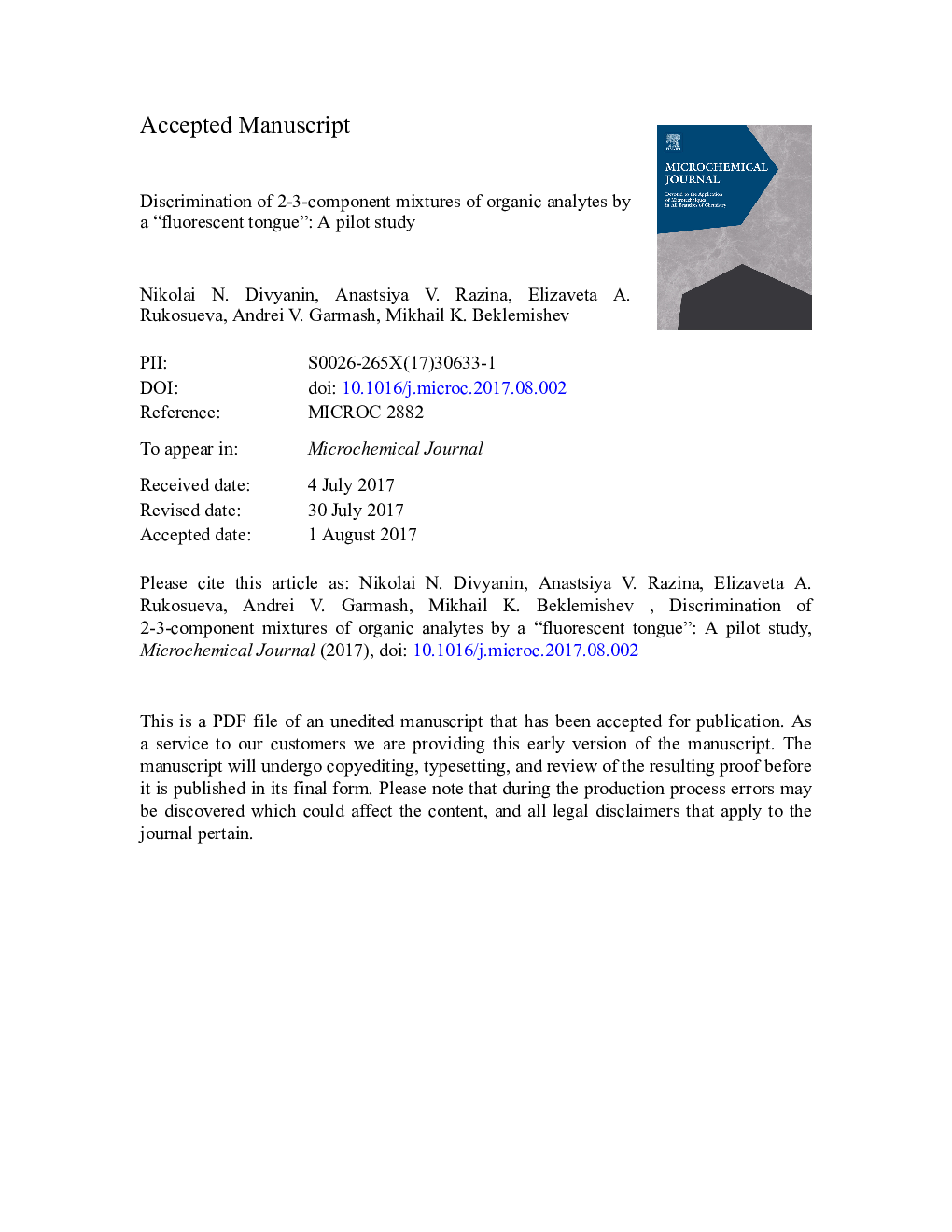| Article ID | Journal | Published Year | Pages | File Type |
|---|---|---|---|---|
| 5139216 | Microchemical Journal | 2017 | 27 Pages |
Abstract
We suggest a new strategy for obtaining fluorescent fingerprints of samples for their recognition using chemometric treatment. The technique is based on the use of a blend of fluorophores of various nature emitting over a wide range of spectrum and changing the emission intensity to a different extent in the presence of different analytes. In this feasibility study we prepared a blend of up to 5 fluorophores covering the emission range of 360-800Â nm: quantum dots CdSe/CdS/ZnS and PbS, a Schiff base produced from o-phthalic dialdehyde and polyethyleneimine, and fluorescein and rhodamine B attached to silica nanoparticles. We showed that the attachment of the fluorescent dyes to a nanoadsorbent appreciably increased their responsiveness to quenching/dequenching by organic compounds. As model analytes, we used amikacin, sulfamethoxazole, piracetam and chloramphenicol and their mixtures in equal concentrations. To evaluate the discrimination ability of the fluorophore blends, their fluorescence spectra obtained in the presence of the model analytes were treated by principal component analysis (PCA). All the individual analytes and their 2- and 3-component mixtures were fully discriminated by using a blend of 4 fluorophores. When necessary, the efficiency of discrimination was quantified as Mahalanobis distances. A UV-vis fingerprint method applied to the same synthetic mixtures was found to provide poorer discrimination.
Related Topics
Physical Sciences and Engineering
Chemistry
Analytical Chemistry
Authors
Nikolai N. Divyanin, Anastasiya V. Razina, Elizaveta A. Rukosueva, Andrei V. Garmash, Mikhail K. Beklemishev,
